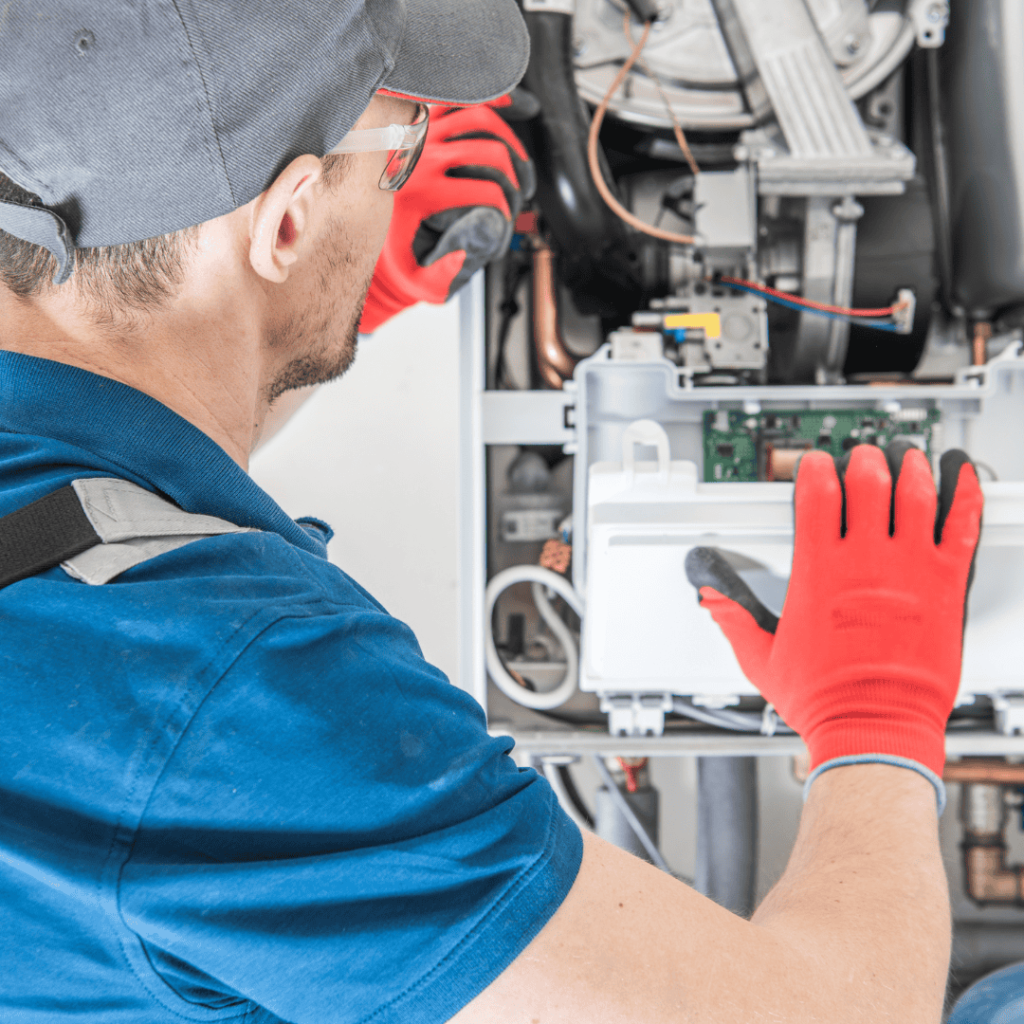Carbon Monoxide and Your Gas Furnace

Understanding the relationship between your gas furnace and carbon monoxide is crucial for maintaining a safe and healthy home environment. Carbon monoxide is a potentially lethal gas that emits from your furnace. CO exposure is one of the leading causes of poisoning death in the U.S., killing around 450 people annually according to the data.
In this blog post, we will delve into the importance of regular furnace maintenance to prevent carbon monoxide leaks, the signs to look out for, and what immediate steps to take if you suspect a leak. A well-informed homeowner is a safer homeowner, so let’s get started.
What is Carbon Monoxide (CO)?
Carbon monoxide (CO) is a poisonous, colorless, odorless, and tasteless gas. Although it has no detectable odor, CO is often mixed with other gases that do have an odor. So, you can inhale carbon monoxide right along with gases that you can smell and not even know that CO is present.
Where is Carbon Monoxide Found?
CO is a common industrial hazard resulting from the incomplete burning of natural gas and any other material containing carbon such as gasoline, kerosene, oil, propane, coal, or wood. Forges, blast furnaces, and coke ovens produce CO, but one of the most common sources of exposure in the workplace is the internal combustion engine.
Our focus will be on carbon monoxide produced by an HVAC furnace. Furnaces with internal combustion generate CO as a normal result of their fuel-burning process.

How Does a Furnace Produce Carbon Monoxide?
Virtually every gas furnace produces some Carbon Monoxide, which is then carried away from your home through the furnace’s venting.
A clean, efficiently burning gas furnace produces very small amounts of carbon monoxide, while a dirty, inefficiently burning one can produce larger amounts. Carbon Monoxide is odorless and colorless.
It causes flu-like symptoms, disorientation, confusion, and even death. As we stated already, it on average kills around 450 people each year.
How to Be Safe and Proactive
It is highly recommended that you have your furnace cleaned and checked every year. The older the furnace, the more important this service is.
Newer gas furnaces are equipped with many features that shut the furnace off when a problem is detected. Older furnaces have no such devices.
Over time, furnaces can develop small cracks in the combustion chamber. These cracks may not be visible to the naked eye. It is through these cracks that Carbon Monoxide can leak into your home. So having an annual furnace tune up can prevent this from happening.
You should also install carbon monoxide detectors in your home. They will sound an alarm if CO levels exceed a certain point. This will alert you to the presence of CO and give you a chance to evacuate quickly.
Finally, always be aware of the signs that something is wrong with your furnace: strange odors, increased humidity levels, soot deposits, or smoke coming from your furnace.
Any time you notice one of these signs, shut off your furnace and call an HVAC repair technician immediately. That way you can rest assured that your family is safe from Carbon Monoxide poisoning.

A Thomas Tale:
We get asked all of the time, is a furnace tune up worth it?
Yes, absolutely! Here is a recent example of why:
While on one of our biannual tune-up visits for an SEA customer, we came across this rather unsettling heat exchanger (where gas is burned in a furnace):
Our customer had been having headaches and didn’t know the cause. We found that her heat exchanger had rusted out and left these holes for carbon monoxide to escape into her home.
Thankfully, we were able to catch it before any of the symptoms progressed, but it really highlights the importance of checking your gas furnace on a regular basis.
We recommend 1-2 inspections per year, as included in our Safety and Efficiency Agreement. If you have a gas furnace that you haven’t had inspected at any time in the last year, please be sure to call a certified HVAC contractor to come by and thoroughly inspect your gas furnace to verify there are no holes or cracks in your heat exchanger.
In Summary
Investing in your gas furnace should be a priority for any homeowner. Regular maintenance will help keep the appliance running efficiently and safely. It is also essential to have carbon monoxide detectors installed throughout your home, as well as know what signs to look out for if you suspect a CO leak. Being informed and proactive about carbon monoxide safety can save lives!
If you have any questions about furnace maintenance, carbon monoxide safety, or furnace repairs, feel free to reach out to our friendly HVAC service team. We are always here to help! Thanks for reading and stay safe!
Remember – never ignore signs of a possible CO leak. If you even suspect something is wrong, contact an HVAC professional right away.
